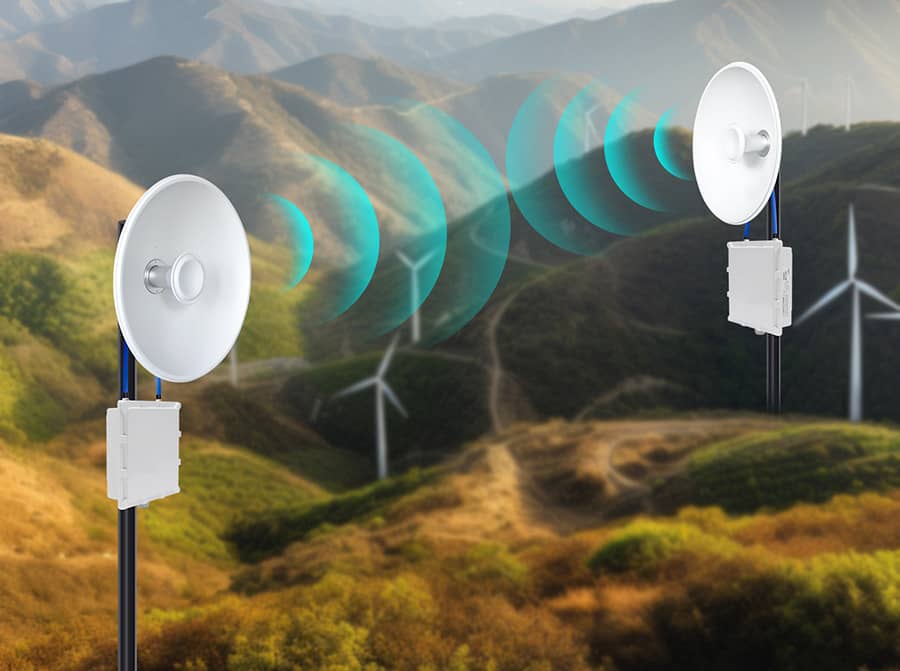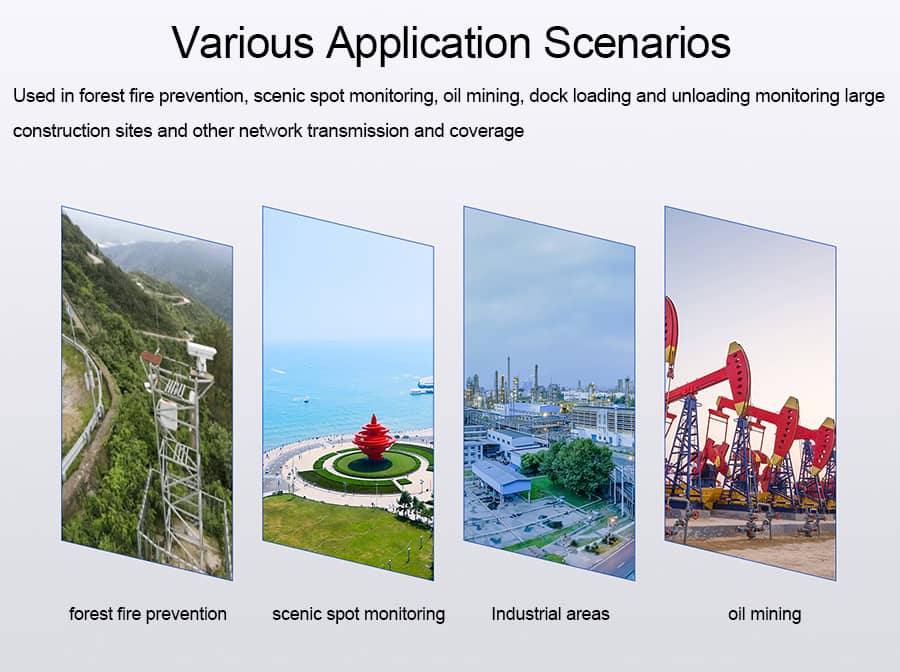Please submit your message online and we will contact you as soon as possible!
- Experience security and speed, without compromise.

2025-01-14

A wireless bridge is a networking device that connects two or more network segments using a wireless connection. Unlike traditional routers or access points, wireless bridges can extend your network without the need for cables. They allow for seamless communication between different areas, helping organizations and homes maintain a robust network even in hard-to-wire locations.
Wireless bridges are commonly used in businesses, campuses, and even residential areas to improve connectivity, link isolated networks, and provide internet access in areas where physical wiring is either impossible or cost-prohibitive.
At its core, a wireless bridge uses radio frequency to transmit data between two separate networks. One network connects to the bridge and communicates with another network at a different location. For instance, if you have two buildings on a large campus, a wireless bridge can connect the networks in each building, allowing devices in both buildings to share the same internet connection and internal network resources.
Wireless bridges typically use directional antennas to focus the signal in a specific direction, ensuring a stable and strong connection over long distances. These bridges operate by either creating a point-to-point or point-to-multipoint connection.

When selecting a wireless bridge, you should consider which type suits your needs best. The most common types are:
A point-to-point wireless bridge is designed to link two locations. It establishes a direct, high-speed wireless connection between two points, typically with line-of-sight. This type of bridge is ideal for linking buildings that are not far apart or for connecting offices and remote sites.
● Use Case: Connecting two buildings across a campus or between offices in different locations.
● Benefits: Offers high-speed connections with minimal latency, making it suitable for high-bandwidth applications like video conferencing or file sharing.
A point-to-multipoint wireless bridge extends a network from a central location to multiple remote sites. This configuration allows one wireless bridge to connect multiple other devices or networks within a certain range.
● Use Case: Expanding network coverage to multiple buildings or sites in an industrial park or across a large estate.
● Benefits: Allows for broad network coverage, perfect for large businesses or campuses that need to connect several locations.
There are many reasons to use a wireless bridge, especially if your goal is to improve network performance and expand coverage. Here are some key benefits:
Running cables between buildings or across a large campus can be expensive, especially when dealing with long distances or difficult terrain. Wireless bridges offer a more affordable alternative, eliminating the need for costly infrastructure. With a wireless bridge, you can achieve long-range connectivity at a fraction of the cost.
Compared to wired solutions, wireless bridges are easy to install and set up. You don’t need to worry about drilling holes or running cables across large distances. In fact, you can deploy a wireless bridge in just a few hours, making it a time-efficient option for expanding your network.
If your current network doesn't cover all the areas you need, a wireless bridge can extend its range and improve connectivity. This is especially useful in areas like large campuses, multi-building offices, or remote locations that are difficult to wire with traditional cables.
Wireless bridges offer incredible flexibility in terms of deployment. They can be used in a wide range of environments, from urban settings to rural areas, and they can adapt to different types of networks. Whether you need to connect devices over a short distance or link buildings miles apart, wireless bridges provide a scalable solution.
One of the biggest advantages of wireless bridges is that they eliminate the need for physical cabling. This is particularly useful in situations where digging trenches or running wires is impractical, such as across roads, in remote areas, or between buildings with no existing cabling infrastructure.

Wireless bridges are used in a variety of scenarios, ranging from business networks to home networking solutions. Some common applications include:
● Connecting Remote Locations: Wireless bridges can link offices or buildings in different locations, even if they are miles apart, without the need for expensive leased lines or fiber optics.
● Expanding Network Coverage: If your Wi-Fi network doesn’t reach all corners of your property or office, a wireless bridge can extend coverage to remote or hard-to-reach areas.
● Connecting Wired Devices to a Wireless Network: For environments where Ethernet cabling is impractical, wireless Ethernet bridges can connect wired devices to a wireless network, enabling them to communicate without the need for direct cable connections.
When selecting a wireless bridge, there are several factors to consider:
If the distance between the two networks is short (within a few hundred meters), a Wi-Fi bridge or wireless Ethernet bridge will likely work. For longer distances, especially over several kilometers, a point-to-point wireless bridge is the best option.
Determine the amount of data your network will handle. If you need to support high-bandwidth applications such as video streaming, choose a bridge that can offer high-speed connectivity.
Wireless signals can be affected by environmental factors, such as physical obstructions (walls, trees), interference from other electronic devices, and weather conditions. Choose a bridge with appropriate antennas and a suitable range to handle these challenges.
Wireless bridges are generally affordable, but their cost can vary depending on the type, range, and capabilities. Choose a solution that meets your budget while still offering the necessary features for your specific use case.
A wireless bridge is an invaluable tool for extending network connectivity and improving communication between distant locations. Whether you’re linking buildings, providing internet access in remote areas, or connecting devices without physical cables, wireless bridges offer a cost-effective, flexible solution. By understanding the types of wireless bridges available and their specific benefits, you can choose the best option for your network and ensure reliable, high-speed connectivity for your home or business.
Please submit your message online and we will contact you as soon as possible!